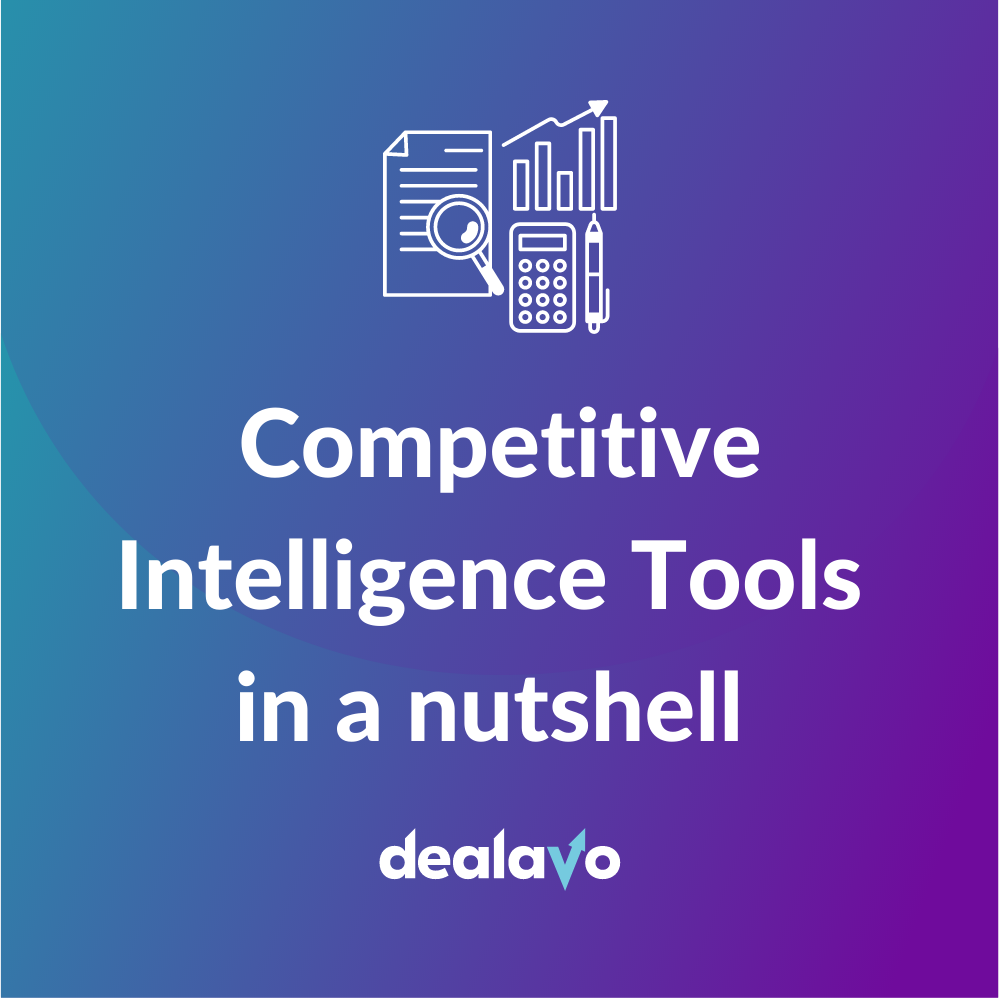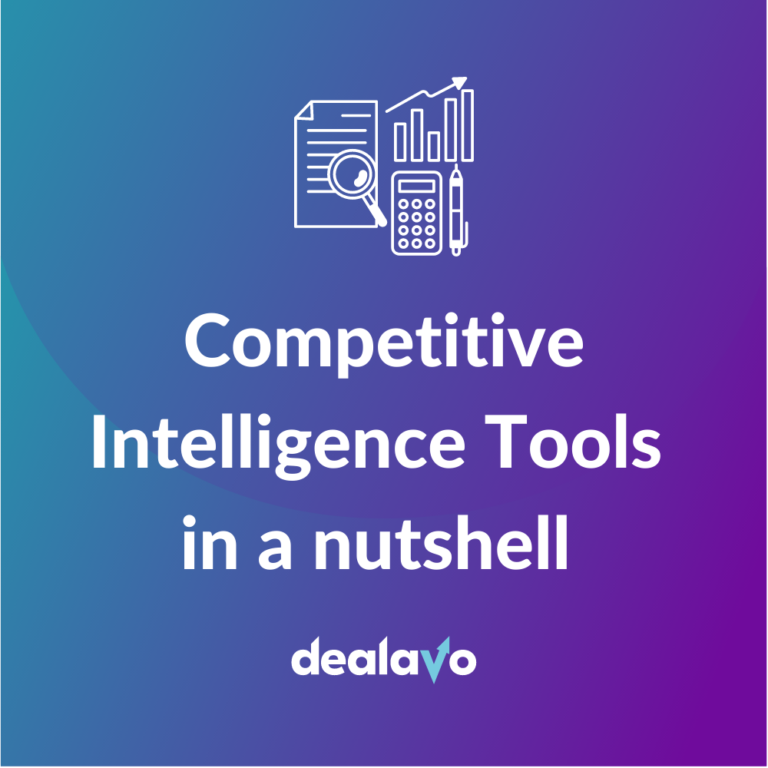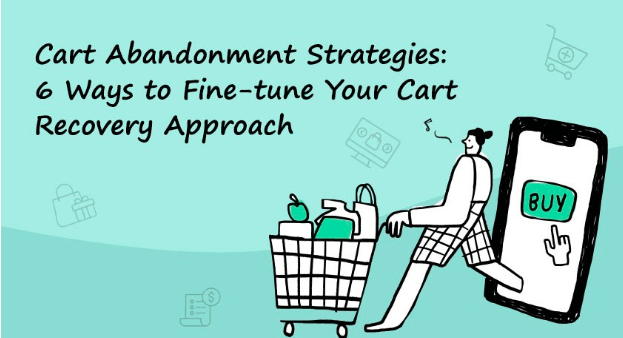How to Increase Your Distribution Scope: A Guide for E-commerce Retailers and Manufacturers
- 10 August 2023
Product distribution plays a crucial role in determining the success of retailers and manufacturers in today’s e-commerce world. Here, we will try to cover the key strategies that will expand your product distribution in e-commerce and maximize your growth potential.
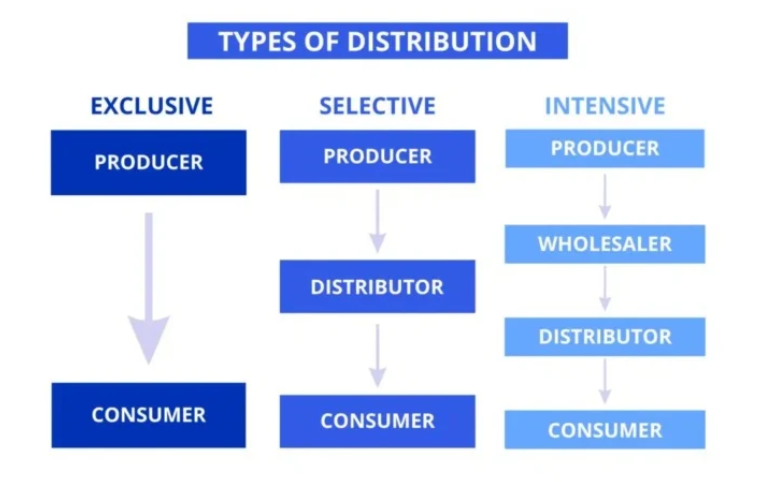
Source: https://neilpatel.com/blog/distribution-channels/
A well-structured distribution scope is the key to unlocking potential growth, extending market presence, and outperforming competitors in e-commerce.
In this text, we will discuss the benefits of expanding the distribution scope. By this, we mean:
- growing your customer base,
- extending your market reach,
- increasing your brand’s visibility,
- boosting your e-commerce business growth.
We will also analyze what benefits you can get from leveraging such price monitoring tools as Dealavo. That’s because embracing successful pricing strategies can significantly boost your distribution effectiveness.
Assessing the Current Distribution Scope
It is essential for e-commerce retailers and manufacturers to conduct a thorough assessment of their existing distribution scope before engaging in distribution expansion.
Understanding the Current Distribution Channels
Identify and list all the distribution channels currently utilized by your business, including:
- online platforms,
- physical stores,
- third-party retailers,
- wholesalers,
- other distribution partners.
Gather data on the sales performance and reach of each channel to gain insights into their individual effectiveness. This will help you understand the current state of your distribution potential, and start working on maximizing your distribution channels’ effectiveness.
Analysis of Strengths and Weaknesses
Once you are well aware of your distribution network, you can begin evaluating the strong and weak points of each of your distribution channels. You will learn what could be improved and what challenges you may need to face in the future.
While thinking about your distribution network, you should consider such factors as their:
- sales volume,
- profitability,
- geographic coverage,
- customer engagement.
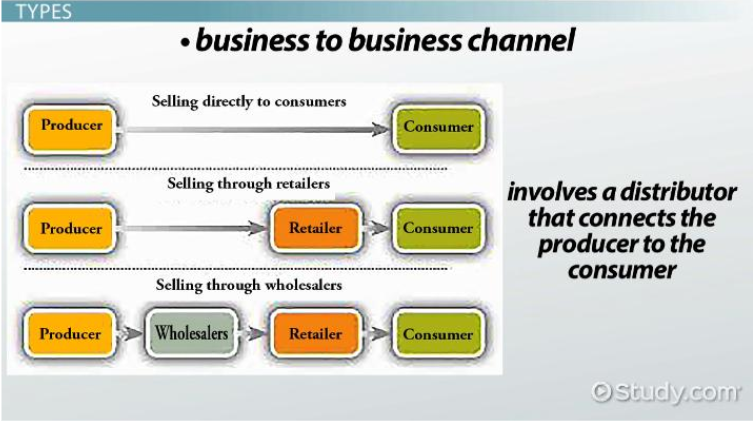
Source: https://study.com/learn/lesson/distribution-system-types-examples.html
You should also assess the cost-effectiveness of each channel and the resources required to maintain it. This will let you calculate any potential expenses regarding the development of your distribution scope.
Identifying Potential Gaps and Untapped Opportunities
For e-commerce retailers and manufacturers who want to expand their distribution scope, identifying potential gaps and untapped opportunities is a crucial step. Examining existing practices and market dynamics gives businesses possibility to exploit new markets and enhance distribution effectiveness.
Here’s what you can do to identify any possibilities for you to exploit:
- gather customer feedback and assess customer satisfaction levels for each distribution channel (identify areas where customer needs are not being fully met),
- analyze competitor distribution strategies to learn from their successes and see what your competitors might be overlooking,
- evaluate the performance and reliability of existing distribution partners and vendors,
- analyze consumer preferences, purchasing power, and cultural fit,
- evaluate sales performance, profit margins, and customer reach of your distribution channels.
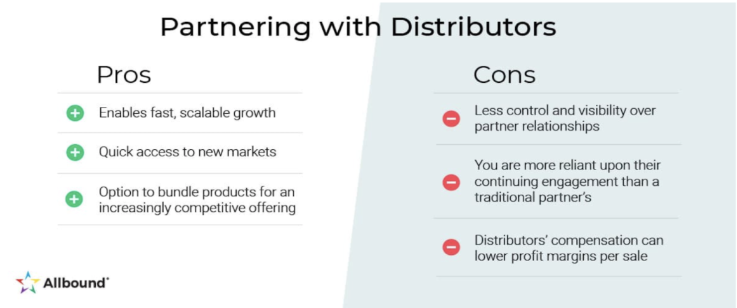
Source: https://deliverr.com/blog/channel-vs-distribution-partners/
Diversifying Distribution Channels
Diversifying distribution channels is a must for e-commerce sellers and producers who wish to strengthen their market position and reach. Businesses may reduce their reliance on a single channel and reach out to a wider audience.
Benefits of Diversifying Distribution Channels
Diversifying your distribution channels may bring you several benefits. Let’s go through some of the most important:
- risk reduction – diversification helps avoid risks related to relying solely on one distribution channel,
- brand exposure – diversification may foster brand loyalty and attract new customers,
- sales volume optimization – catering to different customer preferences and buying behaviors, you can optimize your sales volume and revenue potential,
- market penetration – diversification enables businesses to penetrate new demographics and regions (various distribution channels can offer access to distinct markets and customer segments).
Exploring Various Distribution Channels
When thinking about diversifying your distribution channels, the most basic knowledge you should have is what distinct distribution channels are like.
The specific nature of each way of distributing your products may have a great impact on your market position. Consider the following:
- online marketplaces – Amazon, eBay, and alike have an established infrastructure and wide customer base you can tap into,
- brick-and-mortar stores – some customers (especially older generations) may still prefer buying things in physical stores,
- wholesalers – connecting with wholesalers and distributors may expand your products’ availability to a much wider network of retailers,
- a direct-to-customer channel – you can try skipping any intermediaries if your business is suitable for leveraging a DTC channel.
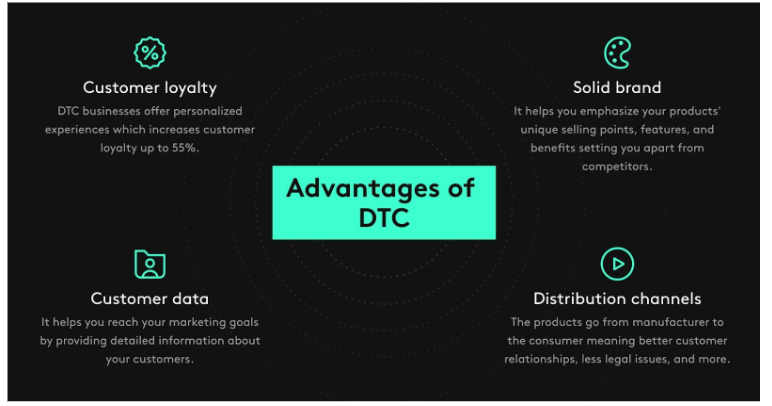
Source: https://videowise.com/blog/what-is-dtc-ecommerce
Examples of Successful Brands Embracing Diversification
There are a lot of brands and businesses that have scored great success thanks to the right implementation of distribution diversification strategies.
It’s impossible to list all of them, but the ones of the biggest are:
To take a closer look at some examples from the list, the renowned sportswear brand, Nike, utilizes a multi-channel approach by operating its own retail stores, selling through various online platforms, and partnering with select retailers. In the case of Coca-Cola, they distribute their products through a diverse network of retailers, restaurants, vending machines, and convenience stores.
Leveraging Online Marketplaces
Online marketplaces like Amazon, eBay, and Alibaba have revolutionized the way people shop.
Partnering with them offers e-commerce retailers and manufacturers an unparalleled opportunity to boost their distribution scope. Among others, here are a few main advantages coming from leveraging online marketplaces:
- increasing your brand’s visibility exponentially – chances of being noticed by millions of potential customers,
- gaining access to global customer bases – across different locations and time zones,
- enhancing your brand’s credibility – people tend to perceive products on online marketplaces as more trustworthy and reliable.
Tips for Optimizing Product Listings and Maintaining Competitive Pricing
Once you get your spot on any online marketplace, it is extremely important for you to know how to stand out from your vast competition while fighting for the potential customers’ wallets.
The key aspects of staying ahead of your rivals are to optimize your product listings and maintain competitive product prices by:
- providing high-quality images of your products,
- creating compelling product descriptions,
- encouraging your customers to leave feedback/reviews of the products they had bought,
- taking care of SEO and keywords for better visibility of your products,
- leveraging dynamic pricing strategies to keep your prices competitive at all times,
- creating value-added offers (discounts, special bundles, etc.).
The Benefits of Leveraging Online Marketplaces: eBay & Alibaba
The greatest benefit of leveraging large online marketplaces like eBay and Alibaba is the immense customer reach boost for your products since millions of users visit those platforms every month.
eBay
With over 135 million active buyers worldwide (as of 2022), eBay provides access to a vast and diverse customer base seeking unique and rare products. It’s famous for:
- auction-style listings – eBay’s auction-style listings enable sellers to gauge demand and optimize prices, attracting customers who like the thrill of bidding,
- one-of-a-kind offerings – businesses that sell vintage collectibles and niche products thrive on eBay, catering to clients looking for uncommon items,
- cross-border trade – eBay’s Global Shipping Program facilitates international trade, enabling businesses to reach customers across borders with ease.
Alibaba
Alibaba dominates the Chinese e-commerce landscape, with its platforms serving over 1.28B users, offering unmatched market reach. In 2021, the platform’s annual revenue crossed $717B. When this online marketplace, you get:
- a gateway to the Chinese market – partnering with Alibaba grants access to China’s booming consumer market, tapping into a growing middle class with increasing purchasing power,
- new B2B opportunities – Alibaba.com, the marketplace’s B2B platform, connects businesses with suppliers and buyers globally, fostering lucrative trade opportunities,
- access to Tmall Global – Alibaba’s cross-border B2C online marketplace that enables businesses and merchants with no Chinese operations to create virtual storefronts and send items across the border, from the countries where they are based right to China.
Going International
Expanding distribution into international markets is a transformative step for e-commerce retailers and manufacturers seeking to unlock a world of brand-new opportunities, accessing diverse customer bases. Still, one cannot forget about the unique challenges that may come with it.
Opportunities and Challenges
Here are a few aspects worth considering when thinking about expanding your e-commerce business across the borders of your country:
- market potential – it can be an opportunity or a challenge because international markets offer a vast pool of potential customers and new demographics, and you should also be aware of the emerging consumer trends you may not fit in,
- cultural differences – understanding and adapting to cultural nuances is essential for establishing a strong connection with international consumers and building brand loyalty,
- local regulations – complying with foreign regulations, customs, and import/export laws might pose a difficult challenge, but it is crucial to avoid legal obstacles and ensure smooth operations,
- logistics and supply chains – it is vital to develop a well-organized supply chain, including efficient shipping, delivery, and stock management solutions.

Source: https://keydifferences.com/difference-between-logistics-and-supply-chain-management.html
Selecting the Right International Partners
Another important thing to mind is the choice of your international partners. It is essential to choose right – wrong decisions may disrupt your distribution channels’ efficiency.
Partner with local distributors, retailers, or logistics providers who are knowledgeable in the target market. Try picking the partners with:
- solid reputation,
- strong customer base,
- commitment to your brand’s values.
Pricing Strategies for Different Markets
When planning your pricing strategy for the international markets, mind your target audience and all the potential fees you may need to pay.
Set pricing strategies that align with the purchasing power and local economic conditions of each target market. Also, to guarantee competitive yet profitable pricing, consider taxes, import duties, and currency changes.
The Role of Proper Pricing Policy
Pricing strategy is critical in boosting distribution effectiveness and influencing consumer behavior amid an increasingly competitive e-commerce landscape.
A well-defined, data-driven pricing policy can have a significant impact on the distribution scope.
Pricing and Distribution Strategy
In e-commerce, there’s a direct link between the pricing and the distribution strategies. Pricing directly influences the demand for products and the attractiveness of distribution channels to retailers and consumers.
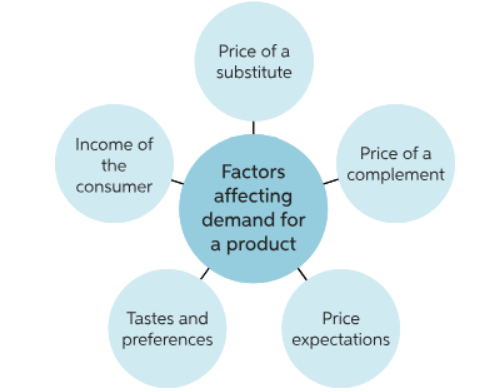
Source: https://www.chegg.com/learn/topic/law-of-demand
Moreover, a carefully crafted pricing policy ensures that products remain competitive and appealing across various distribution platforms.
How Competitive Pricing Attracts Retailers and Customers
When prices are set strategically and aligned with market expectations, businesses can gain a competitive edge.
Competitive pricing enhances the sales potential of products. Retailers prefer to stock items that have a higher likelihood of selling quickly, reducing the need for excessive inventory management and holding costs. It is also easier for retailers to penetrate the market and attract new customers if their prices are competitive. By consistently offering competitive prices, businesses can outpace their competitors and gain a larger share of the market.
Customers are more likely to make spontaneous buying decisions when prices are attractive and within their budget (aka “impulse buying”). Competitive pricing also helps retain existing customers.
Potential Consequences of Inappropriate Pricing
Setting prices either too high or excessively low can have a number of consequences, such as bad impact on profitability, consumer perception, and overall business performance.
Reduced Profitability
Setting prices too high can deter customers from making purchases, resulting in reduced sales volume and lower revenue. On the other hand, if your prices are excessively low, it can lead to thin profit margins.
Channel Conflicts
Inconsistent pricing, which is offering different prices for the same product on different distribution channels, can create conflicts among retailers or distributors. This can strain relationships and hinder effective distribution.
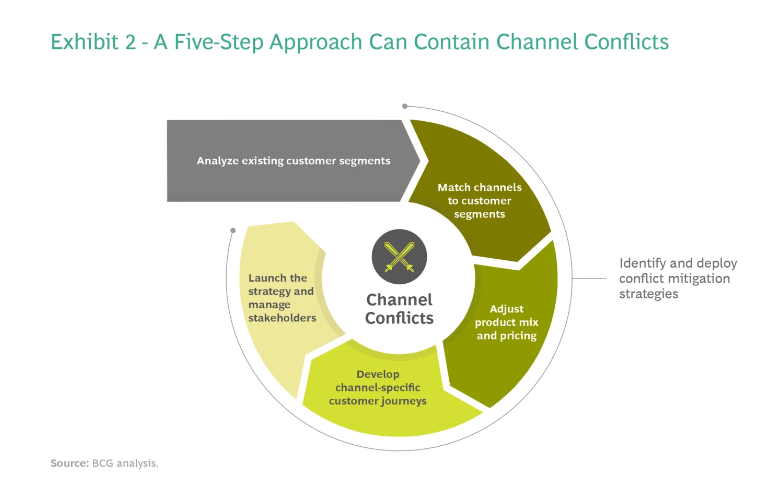
Source: https://www.bcg.com/publications/2021/mitigating-e-commerce-channel-conflicts
Brand Dilution
Excessive pricing compared to competitors can make a business less competitive in the market and dilute a brand’s image. Customers may start perceiving its products as cheap or low-quality.
Pricing inconsistency across different channels or locations can also confuse customers, diluting the brand’s value proposition.
Dynamic Pricing Strategies
With static prices, you may not meet the fast-changing demands of the e-commerce market. Dynamic pricing, also known as real-time pricing, involves adjusting product prices in response to market fluctuations, demand patterns, and competitor activities.
The Benefits of Using Data Analytics to Set Optimized Prices
There are a number of advantages to using data analytics to set optimal prices for various customer segments and distribution channels:
- demand forecasting – by analyzing sales data and customer behavior, you can help predict demand patterns for different products and customer segments,
- enhanced decision-making – pricing decisions are no longer based on guesswork but on precise data and numbers,
- better customer retention and acquisition – offering personalized pricing strengthens customer relationships and drives customer acquisition.
Dealavo For Optimizing Distribution Channels Effectiveness
There are various tools that offer a range of price optimization features, including repricing and dynamic pricing.
With Dealavo, a leading pricing intelligence platform, you gain access to:
- up-to-date data collection – Dealavo‘s robust data collection capabilities continuously monitor a vast array of online markets and e-commerce platforms, providing reliable pricing data,
- Competitor Price Tracking – a feature that allows retailers and manufacturers to adjust their own prices in response to market changes and maintain competitiveness,
- Price Monitoring alerts – customizable price monitoring alerts notify businesses of significant price changes,
- advanced analytics and data visualization – visual representations of trends and performance metrics help retailers and manufacturers make data-driven decisions with clarity,
- distribution reports – with Dealavo distribution report you can see what the market coverage with your or competing products is, check the efficiency of the current distribution strategy, and optimize it based on the collected data.
Learn more about Dealavo
Conclusions
Expanding distribution scope is fundamental for e-commerce retailers and manufacturers aiming for market dominance. Leveraging online marketplaces, establishing strategic partnerships, and adopting dynamic pricing strategies can help businesses achieve their distribution goals.
Dealavo, with its wide array of price optimization features, can also greatly enhance your distribution channel’s effectiveness, supporting you in remaining competitive in the e-commerce market.
